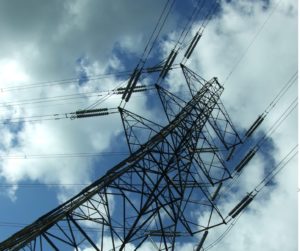 By now, every Australian would know that the entire state of South Australia experienced a power system failure as severe storms with high winds uprooted 22 high voltage power pylons cutting off a major part of system generation at Port Augusta. For about 10 hours on Wednesday, we all effectively went ‘off grid’. Rolling blackouts or brownouts are not uncommon but this was the first time that an entire state has been without power.
By now, every Australian would know that the entire state of South Australia experienced a power system failure as severe storms with high winds uprooted 22 high voltage power pylons cutting off a major part of system generation at Port Augusta. For about 10 hours on Wednesday, we all effectively went ‘off grid’. Rolling blackouts or brownouts are not uncommon but this was the first time that an entire state has been without power.
At 3.30pm light and power was cut to my office. The desk top computer stopped – the laptop, however, continued working for another 5 hours. The land line phone connection ceased – but the mobile did just fine. Televisions stopped but information got out to everyone via Facebook on mobile connections. Power was mostly resumed at 1.10 am Thursday but, for ten hours, the battery was king!
Those in government responsible for the future of our infrastructure might well have asked themselves whether climate change might not engender future storms like this and, reflecting on the fact that the statewide blackout was caused by the necessity to protect the integrated system, perhaps they might also have asked themselves whether the efficiency benefits of integration might not come at a cost? They might then have considered whether a more disintegrated system of power generation and distribution, such as is now available with the growth of renewables such as wind and solar might not have mitigated the impact? After all, when the system goes down, those who are not reliant on it benefit. So it is curious that the Prime Minister and assortment of others antagonistic to wind and solar should blame renewables for the failure!
Or perhaps not so curious if the aim is to protect incumbent power and distribution networks? The electricity industry is well aware of the threat of wind and solar to its generation and distribution networks when long lasting batteries are developed, which is now, perhaps, not more than five years away.
Our Question today: Given that battery development will represent a major disruption to power production and distribution what should be the intelligent, forward looking, attitudes of our government – to block, or to adapt?

Waleed Aly (The Project) nailed it in his first question to the Federal Energy Minister on Thursday night: “do you accept that if SA had nothing but the most dirty big powerful brown coal supplying its entire electricity, that this still would have happened?” Josh Frydenberg had to admit that the best advice to him is that it would have occurred because of that weather event.
Aly couldn’t have put it better: “now we’ve cleared up the political questions – is there anything else we should focus on clearing up?” He was talking about the storm debris… but those of us interested in “talking infrastructure” should ask if we can clear up issues such as those the Feds are raising.
Malcolm Turnbull told a story in the Australian: “a number of the state Labor governments have over the years set priorities and renewable targets that are extremely aggressive, extremely unrealistic, and have paid little or no attention to energy security”. What’s really interesting is that this ISN’T about ‘levels of service’.
Despite the (in)frequency of such storms, having a whole state blacked out seems to be unacceptable, so the PRIMARY question is what do we need to do to make the system resilient enough to weather such storms. What will it cost?
BUT the questions the Feds are raising (apparently unrelated to the storm!) are broader: about what our community VALUES (at the level of ‘organisational objectives’ in the SAMP in ISO 55k). The accusation being levelled at the states is they’ve wrongly traded off energy security in favour of renewables… but is this true?
I suggest Penny’s question about batteries can only be answered in such a context. It’s interesting to think that there’s no Strategic AMP that spans this context: I found asset strategies for the distributor (SA Power) and I’m sure the electricity generator(s) have some too… but these broader discussions that affect the whole network affect both organisations, so should the state government have a document that is specific about what (if any) trade offs have been made???